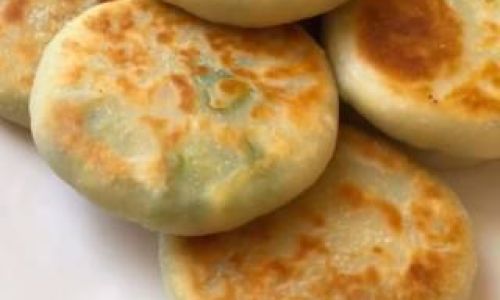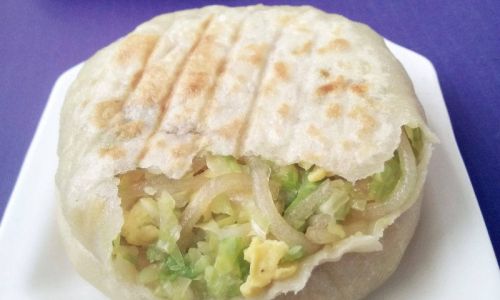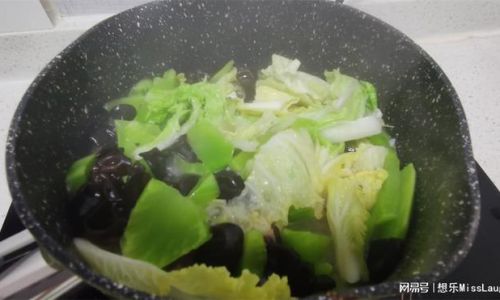Table of content
Chinese cuisine is renowned for its ability to transform simple, humble ingredients into comforting and flavorful dishes. One such example is the Chinese Cabbage, Vermicelli, and Egg Pie, a staple in many households. This savory pie, often enjoyed for breakfast, lunch, or dinner, combines the crisp freshness of cabbage, the chewy texture of glass noodles (vermicelli), and the rich protein boost from eggs, all encased in a golden, pan-fried dough. Below, we’ll explore the history, ingredients, and techniques behind this beloved dish, ensuring even novice cooks can recreate it with confidence.

A Brief History of the Dish
The origins of this pie trace back to northern China, where hearty, filling meals were essential to withstand cold winters. Cabbage, a readily available and affordable vegetable, became a kitchen staple, while vermicelli (made from mung bean or sweet potato starch) added substance without heaviness. Eggs, a symbol of nourishment, tied the ingredients together. Over generations, families adapted the recipe, passing down tweaks to suit regional tastes and seasonal produce. Today, it remains a symbol of home-cooked love—simple yet deeply satisfying.
Ingredients You’ll Need
Before diving into the cooking process, gather these fresh, quality ingredients:
For the Dough
- 2½ cups (300g) all-purpose flour: Use mid-protein flour for a balance of chewiness and tenderness.
- 1 cup (240ml) warm water (100–110°F/38–43°C): Warm water activates gluten development.
- ½ teaspoon salt: Enhances dough elasticity and flavor.
- 1 tablespoon vegetable oil (optional): Adds richness and prevents sticking.
For the Filling
- 1 medium Chinese cabbage (napa cabbage): Approximately 1.5 lbs (680g), finely shredded.
- 4 oz (115g) dried vermicelli noodles: Soaked in hot water until pliable, then chopped.
- 3 large eggs: Lightly beaten for fluffiness.
- 3 green onions: Thinly sliced (white and green parts separated).
- 2 garlic cloves: Minced for aromatic depth.
- 1-inch (2.5cm) ginger: Grated for subtle heat.
- 2 tablespoons soy sauce: Use light soy sauce for saltiness; dark soy sauce adds color.
- 1 tablespoon sesame oil: Toasted sesame oil imparts nutty richness.
- 1 teaspoon white pepper: Adjust to taste; black pepper works as a substitute.
- Salt: To season (approximately 1 teaspoon, adjusted later).
- 3 tablespoons vegetable oil: For sautéing vegetables and frying pies.
Optional Additions
- ½ cup shredded carrots: Adds sweetness and color.
- ¼ cup dried wood ear mushrooms: Rehydrated and sliced for crunch.
- 1 teaspoon chili flakes: For a spicy kick.
Step-by-Step Instructions
Preparing the Dough
The dough is the foundation of this pie—soft, pliable, and capable of holding the generous filling without tearing.
- Mix the Dough: In a large mixing bowl, combine flour and salt. Gradually pour in warm water while stirring with chopsticks or a wooden spoon. Once a shaggy mass forms, add oil (if using) and knead by hand for 8–10 minutes until smooth and elastic. The dough should feel tacky but not sticky.
- Rest the Dough: Cover the bowl with a damp cloth or plastic wrap and let rest for 30–45 minutes. Resting allows gluten to relax, making the dough easier to roll.
Preparing the Filling
The filling’s success hinges on balancing flavors and textures. Overcooking the vegetables will release excess moisture, leading to soggy pies.

- Sauté Aromatics: Heat 1 tablespoon oil in a large skillet over medium heat. Add minced garlic and grated ginger, stirring until fragrant (30 seconds). Add the white parts of the green onions, reserving the greens for garnish.
- Cook the Cabbage: Add shredded cabbage and a pinch of salt. Sauté for 5–7 minutes until wilted but still slightly crisp. Transfer to a colander and press gently to drain excess liquid.
- Prepare the Vermicelli: Soak dried noodles in hot water for 10 minutes, or until soft. Drain and chop into 2-inch (5cm) segments.
- Scramble the Eggs: In a clean pan, heat 1 tablespoon oil. Pour in beaten eggs and scramble until just set. Avoid overcooking to keep them tender.
- Combine Ingredients: In a large mixing bowl, combine cooked cabbage, vermicelli, scrambled eggs, soy sauce, sesame oil, white pepper, and reserved green onion greens. Taste and adjust seasoning with salt if needed.
Assembling the Pies
Proper assembly ensures even cooking and prevents filling leakage.
- Divide the Dough: After resting, knead the dough briefly and divide into 12 equal portions (about 1.5 oz/40g each). Roll each portion into a smooth ball.
- Roll the Wrappers: On a lightly floured surface, flatten a dough ball with your palm. Use a rolling pin to shape it into a 6-inch (15cm) circle, thinner at the edges than the center. This shape helps the pie puff during cooking.
- Fill and Seal: Place 2–3 tablespoons of filling on one half of the wrapper, leaving a ½-inch (1cm) border. Fold the dough over the filling to form a half-moon. Press the edges firmly to seal, then crimp with a fork for decorative flair. Repeat with remaining dough and filling.
Cooking the Pies
Two methods yield excellent results: pan-frying for a crisp texture or baking for a lighter option.
-
Pan-Frying (Traditional Method):
- Heat 2 tablespoons oil in a non-stick skillet over medium heat.
- Arrange pies in a single layer (work in batches if needed). Fry for 2–3 minutes until golden brown.
- Flip gently, reduce heat to low, and add ¼ cup water. Cover immediately to steam-cook the dough (5–7 minutes).
- Remove the lid, increase heat to medium-high, and fry until the second side is crisp.
-
Baking (Healthier Alternative):

- Preheat oven to 400°F (200°C). Line a baking sheet with parchment paper.
- Brush pies lightly with oil or beaten egg yolk for color.
- Bake for 15–20 minutes, flipping halfway, until golden and puffed.
Serving and Storage
- Serving Suggestions: Pair with a dipping sauce of soy sauce, vinegar, and chili oil. For a heartier meal, serve with pickled vegetables or congee.
- Storage: Leftover pies can be refrigerated for 3 days or frozen for up to 3 months. Reheat in a skillet or oven to restore crispness.
Tips for Perfect Pies
- Prevent Sogginess: Ensure cabbage is thoroughly drained. Excess moisture will make the dough gummy.
- Dough Consistency: If the dough feels stiff after resting, knead in 1–2 teaspoons of water. If sticky, dust with flour.
- Filling Variations: Experiment with spinach, tofu, or minced meat for non-vegetarian versions.
- Freezing Uncooked Pies: Arrange assembled pies on a tray, freeze until solid, then transfer to a freezer bag. Cook directly from frozen, adding 2–3 minutes to cooking time.
The Cultural Significance of the Pie
Beyond its culinary appeal, this dish embodies the ethos of Chinese home cooking: resourcefulness, adaptability, and nourishment. In a fast-paced world, it serves as a comforting reminder of slower moments shared around the table. Whether enjoyed fresh from the pan or packed as a lunchbox treat, the Chinese Cabbage, Vermicelli, and Egg Pie is a testament to the magic of simple ingredients elevated by care and tradition.
Conclusion
Mastering this recipe opens the door to a world of creative possibilities. Customize the filling, adjust the seasonings, or share it with loved ones—each iteration carries the warmth of home. So, roll up your sleeves, embrace the rhythmic kneading, and savor the satisfaction of biting into a pie you’ve crafted with your own hands. After all, food is not just sustenance; it’s a language of love that transcends borders and generations.






0 comments